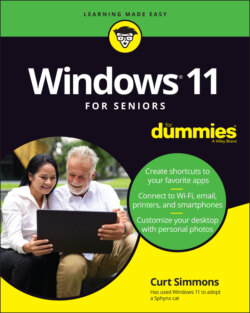Читать книгу Windows 11 For Seniors For Dummies - Curt Simmons - Страница 21
Using the Start Screen, Apps, and Widgets
ОглавлениеIN THIS CHAPTER
Opening, closing, and switching between apps
Introducing the app bar
Tweaking app settings
Having fun with widgets
The Windows 11 Start screen appears when you select the Start button on the taskbar or you press the key. It provides access to just about everything you do with Windows 11.
The Start screen is home to numerous programs, or apps (short for applications). An app performs a function or displays information. For example, the Weather app offers weather reports (surprise!) and the Maps app helps you map a route between two places. Apps can be simple or complex.
Apps appear on the Start screen as icons. An icon displays the app’s name and symbol for the app. An open app typically covers the screen, hiding other apps that are open. However, some apps can be displayed side-by-side with a function called snap.
Windows 11 also provides easy access to a group of mini apps called widgets. Widgets are graphical apps that give you fast at-a-glance information about news, sports, weather, stocks, and so forth. You choose what widgets you want to see and quickly view them using the Widgets icon on the taskbar.
In this chapter, you open, close, and use some of the apps that come with Windows 11. You also switch between apps and the Start screen, and switch directly between two apps. You find out how to search for apps not shown on the Start screen. You discover how to organize the Start screen by rearranging and pinning apps. Finally, you explore how to add and remove widgets.
See Chapter 10 for information on getting new apps from the Microsoft Store.
Although some steps are specific to one app, most of the steps you follow in this chapter can be repeated in any app.
